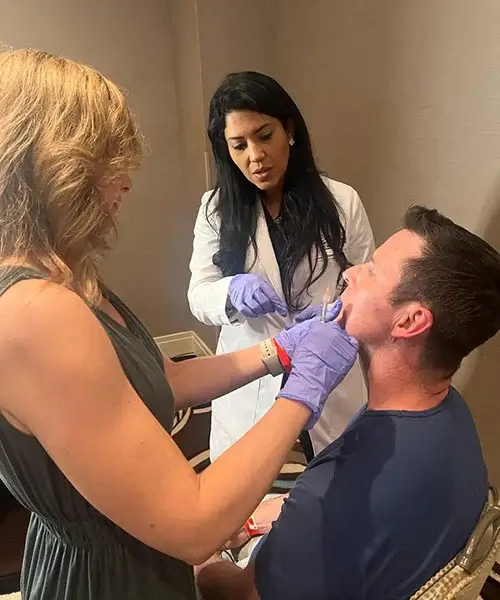The Surge in Male Aesthetic Treatments: What Are Men Getting Done?
By Dr. Stephen Cosentino
PRESIDENT OF EMPIRE MEDICAL TRAINING
Male Botox® is so in right now. According to a recent report, more men are seeking (and getting) botulinum toxin injections than ever before. The industry still serves mostly women — about 4 million women got Botox in 2020 and just 250,000 men — but the male side of the pie is growing more quickly.
It’s not just Botox for men. The number of men seeking cosmetic procedures is growing across the board, and there’s no sign of a slowdown in sight. If you’re a male patient considering your first cosmetic treatment or a medical professional wondering what this trend means for your practice, here’s what you need to know about the procedures men are getting done in 2024 and beyond.
Which Cosmetic Procedures Are Men Getting Done?
It might not surprise you that the most popular cosmetic procedures for men also happen to be the most popular cosmetic procedures for women, for the most part.
Botox for Men
Botox works by temporarily paralyzing the muscles around the injection site. This seemingly simple action means it’s useful for treating a wide range of cosmetic and medical complaints.
On the medical side, male patients have relied on Botox for years to treat chronic migraine, excessive sweating, and blepharospasm (involuntary eye movements). These applications require close medical supervision and careful treatment planning. Some of the treated conditions are relatively rare, which limits the upside for medical Botox providers.
On the cosmetic side, there’s more growth potential. Men seek Botox for all the same reasons women do:
- Treating fine lines, such as crow’s feet and smokers’ lines
- Addressing deeper forehead and facial wrinkles
- Treating other facial cosmetic complaints, such as chin dimples
- Managing cosmetic concerns elsewhere on the body, such as neck lines
The injection sites are generally similar too. And the side effects of Botox affect men and women alike, though it’s against advice for women who are pregnant or breastfeeding to receive botulinum toxin treatment.
But there are some differences for men and women around dosing and placement. For example, because men tend to have larger muscle groups, more Botox may be required to achieve similar results.
Dermal Fillers for Men
Dermal filler is the second most popular type of minimally invasive cosmetic treatment in the United States, after botulinum toxin.
Like Botox, dermal fillers treat visible signs of aging. They also enhance facial volume, which tends to decline over time as the body loses collagen. The risk profile is similar to Botox with some variation (like a rare but serious risk of blood clots). Results typically last longer: six to 18 months for hyaluronic acid filler and two years or longer for other types.
Body Contouring for Men
Body contouring describes an ever-expanding set of anti aging treatments to enhance the physique and help patients feel younger and fitter (ideally with accompanying lifestyle changes). Encouraged by social media influencers, men seek out body contouring procedures like:
- Coolsculpting, a noninvasive form of fat removal
- Liposuction and related minimally invasive fat removal treatments
- Laser and intense pulsed light treatments
Certain types of skin resurfacing treatments, such as chemical peels and microdermabrasion, get lumped in with body contouring procedures. But it’s more accurate to call these “facial beautification” or, simply, “skin care.”
Work With a Provider You Trust
When it comes to aesthetic medicine, one thing isn’t any different for men and women: provider training.
Although they’re generally well tolerated, minimally invasive injectable treatments like Botox and dermal fillers do have some risks. Always work with a provider who’s licensed, board-certified, and up to date on their training.


